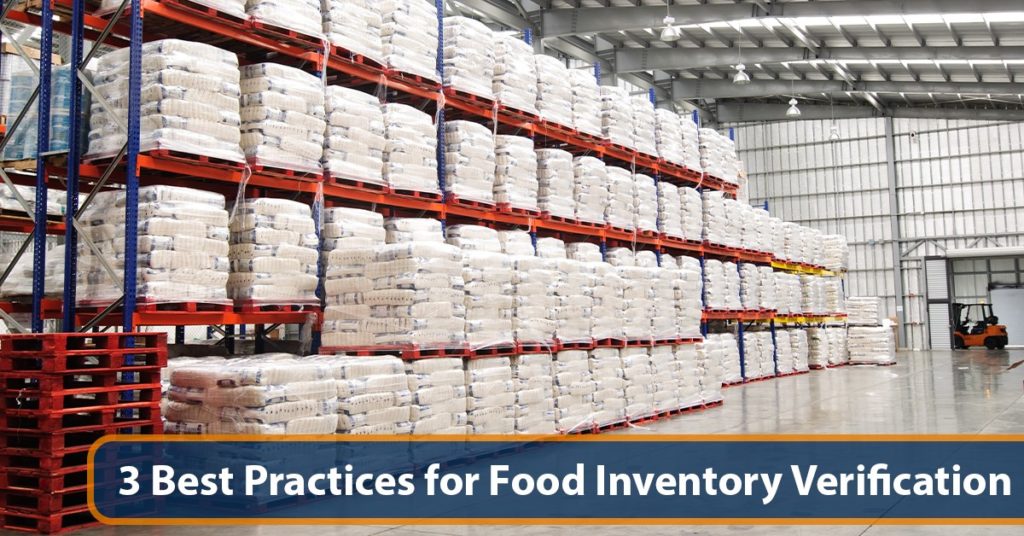When your new inventory arrives, you’re probably not thinking about how to offload it and recoup your money. However, at some point, most food-industry companies have to sell obsolete food inventory.
It makes sense to have supporting documentation in place—from the beginning—should you need to turn your inventory quickly.
Here’s an example of what not being prepared might look like.
A canned soup manufacturer discontinues a slow-moving product line. The owners are left with 15,000 thousand cans of beans. They need to clear out the inventory and rescue some of their investment. Another manufacturer is interested in buying the full load.
However, the seller does not take the time to thoroughly represent the product (such as FSMA documentation—like FSVPs for the imported beans). Without the essential documents, the buyer loses confidence in the product and walks away from the deal.
In the end, the seller owns inventory they can’t sell.
Should you need to sell your inventory (due to a canceled order, off-spec ingredient or surplus product), having the right documentation in place is critical. Additionally, when it comes to expiring ingredients, timing is vital.
From the moment you take ownership of your inventory, make it straightforward to sell, by ensuring you can provide these three types of documentation—instantly.
1) Product Qualifying Documents

Ingredient owners run into problems selling their ingredients if they can’t produce product-qualifying documentation.
Due to consumers’ increased food-standards expectations, ingredient buyers require product qualifying documentation.
That might include:
- Original Manufacturer’s Specification Sheet
- Certificate of Analysis (COA)
- Safety Data Sheet (SDS)
And certificates for:
- Halal and Kosher
- Non-GMO
- USDA organic
| Pro tip: |
| Run a Qualifying Document Round-Up (Guaranteed to make everyone’s life easier) |
| Get your quality assurance and procurement teams together to create and test your procedure for gathering qualifying documents (quickly). 1) Determine a single repository for each ingredient’s documentation. 2) Define the process for collecting the documents (take into consideration time estimates and ingredient document locations). 3) Test your process with a Qualifying Document Round Up—have teams gather requested documents; track the results and adjust the procedures as needed. Let us know how you did in the comments (below)! |
Should you need to sell unusable inventory, quickly accessing and presenting your qualifying documents will put buyers at ease—they’ll know they’re dealing with a reputable company!
2) Product images and sample access
Showing buyers product images and providing sample access will make your inventory more appealing should you need to sell it.
For instance, an image of a product on the warehouse rack shows buyers that it is well-wrapped and free of dirt and debris. Also, seeing the original manufacturing labeling on the packaging proves that the product matches the COA.
Providing sample access and current images can move your product into the market faster and generate greater buyer interest. How the product is presented in pictures helps buyers feel confident that the product is stored correctly.
3) Vendor chain-of-custody

From the field to the warehouse, ingredients pass through many hands before reaching the final destination.
The multiple touchpoints can cause food safety issues due to handling ‘blind spots.’
If a third-party vendor is preparing to sell a food product, the buyer will want to see chain-of-custody proof.
For example, a buyer may request proof that the facility where the ingredients were stored maintains an SQF or AIB approved food safety audit.
Additionally, under the FSMA rules, product owners must provide secure shipping records (blockchain technology has the potential to help with this).
Getting your chain-of-custody documentation squared away from the moment you source an ingredient is a smart move. It guarantees that your food product is FSMA compliant.
Moreover, should you be stuck with a warehouse full of unusable inventory, interested buyers’ confidence will skyrocket, putting you in a good spot for rescuing your profits.
Put yourself in the buyer’s shoes
To understand the importance of food inventory verification, approach your ingredient verifications from the buyer’s point of view. The buyer wants to know the ingredient’s story. Therefore, the conversations, documents, pictures and samples—the facts—must align.
Ultimately, you never know when (or if) you’ll need to sell your inventory. So, getting into the habit of having essential documentation in place for new inventory makes sense (and prevents headaches down the track).
Also, when it comes to selling your problem ingredients, working with a trusted partner is critical. They’re a valuable source for recouping profits on problem inventory. Also, they’ll walk you through the selling process to help you quickly turn unwanted or off-specification ingredients into cash.
At Ingredient Exchange, we help food-industry clients rescue profits from their unusable inventory. Need more information about supporting documentation for the off-spec or downgraded ingredients you’d like to sell?
Give us a call today: 314-872-8850
